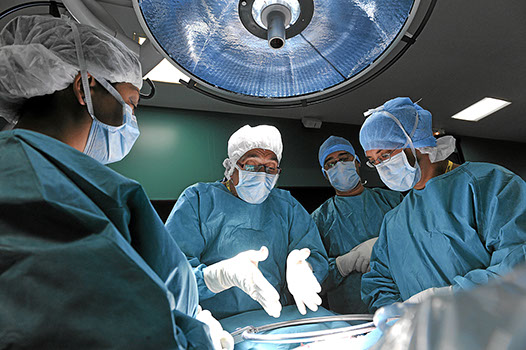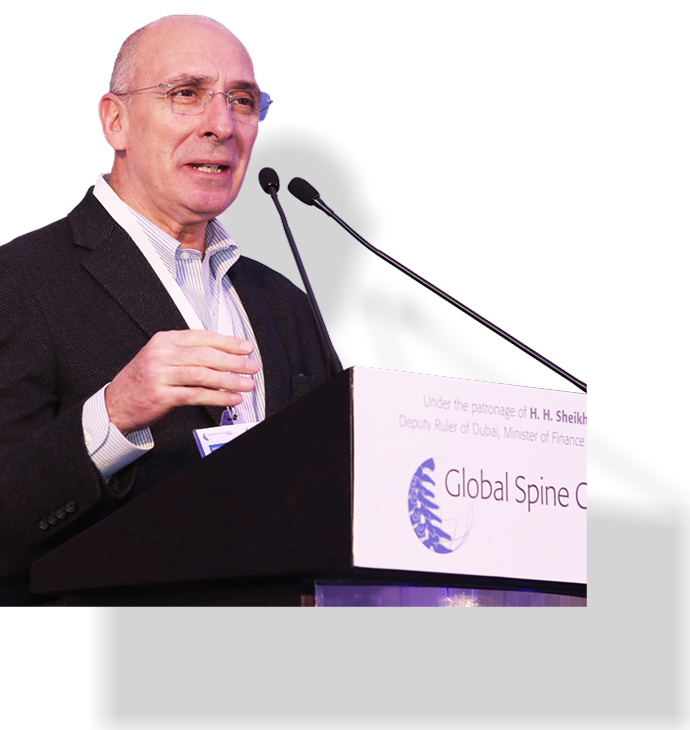


Specializing in complex revision surgeries and adult deformities, he believes that progress does not hinge on high-tech implants, but on a sound foundation of knowledge and research. Here, he explains how he teaches his fellows to learn from their mistakes and always have a Plan B.
What attracted you to spinal surgery, and if you had to do it all over again, would you still choose to become a spine surgeon?
When I was in high school my main interests were mathematics, physics, biology and philosophy. However, when I had to choose for university studies, medicine was my choice because I realized this was a perfect example of empirical science: from the symptoms “Have a Plan B in cases of complex surgery.”to the diagnosis. After my degree, Orthopedics was the most coherent choice because of the relevance of mechanics. Finally, I chose spine surgery because it is a very complex surgery and I like challenges. Without any doubt, I would become a spine surgeon again.
What achievement are you most proud of?
The treatment of severe spondylolisthesis and the adult deformities classifications.
Who has had the greatest influence on your career, and why?
Max Aebi, because he introduced me to AOSpine and has been an example of a great surgeon and a person with original ideas about what the future could be like.
What does a typical work day look like for you—how many surgeries do you perform, and what is your most frequent operation?
My typical week is: Monday grand round, Tuesday surgery, Wednesday office, Thursday surgery, Friday meeting with research team and European Spine Journal job. I carry out two or three revision surgeries in adult and complex deformities per week.
What do you consider your biggest learning as a surgeon?
To have a Plan B in cases of complex surgery.
You are one of the top-level spinal experts on deformity assessment and treatment in degenerative spine and complex spinal cases. What is the biggest challenge in your specialty and how do you see it developing in the next 5 years?
To achieve the same result of standard surgery with MIS, reducing “The best advice I was given was to hate any mistakes, but not the person who made the mistake. You can learn more from complications or poor results than from a perfect surgical result.”risks for the patients and radiations for both patients and surgeons. The most important thing however, is improving and expanding our knowledge instead of developing new implants. In fact, the best progress in adult deformities treatment have been achieved thanks to the research put into it: like sagittal balance principles.
You are also active in research—what projects are you working on currently?
I am running more than one project at the moment. My current activities include coronal unbalance in adults, new anterior approaches to the spine, and how to predict the postop result during the operation.

Outside of your own research, what has been the most interesting paper that you have seen in the past twelve months?
Catharina Parai, Olle Hägg, Bengt Lind and Helena Brisby, ‘The value of patient global assessment in lumbar spine surgery: an evaluation based on more than 90,000 patients’ Eur Spine J (2018) 27: 554-563
What was the best advice you were ever given, and what advice would you give to a young spinal surgeon today?
The best advice I was given was to hate any mistakes, but not the “A good leader should be able to create a great team. Apart from the surgical knowledge this is the most important point.”person who made the mistake. You can learn more from complications or poor results than from a perfect surgical result. The advice I would offer is to first, become a very good surgeon. Second, become independent. Third, increase your credibility. Fourth, increase your income. It should happen in that order.
What are the biggest challenges facing young surgeons today?
Their challenge lies in their belief that technologies and not knowledge can improve their surgical results.
What is your approach to fellowships? Do you see a difference between today’s younger surgeons and your own generation?
I have the great pleasure to have had many fellows coming from “The Global Spine Congress is one of the most important demonstrations of AOSpine’s scientific independence and neutrality from the industry.”different countries. My selection process focuses on avoiding any overlap: first come, first served. I try to teach not only surgical principles but also to create a personal relationship, inviting my fellows home for a dinner, showing my family and I as we are. I do not see any difference between today's younger surgeons and when I was young.
How do you inspire and mentor your fellows? In your opinion what makes a good leader, what is most important apart from surgical knowledge?
A good leader should be able to create a great team. Apart from the surgical knowledge this is the most important point.
You have also been involved with the Global Spine Congress. What makes it special to you, and why would you recommend that surgeons attend?
GSC is one of the most important demonstrations of AOSpine’s scientific independence and neutrality from the industry. I do recommend attending because you can be in an international global event in the typical AO atmosphere.
Outside of spine surgery, how do you unwind? What or who inspires you?
Traveling is one of my great passions. In the past I had the opportunity to visit many countries on vacation. Today I travel mainly for business, but I love traveling itself despite the destination, so I still really enjoy it. My other great passion is diving, which I enjoy doing with my wife Lara and son Davide.
What does being a member of AOSpine mean to you personally? Why would you recommend becoming a member?
For me, being an AOSpine member means being part of a scientific community with a lot of very good friends. This is the reason I strongly suggest becoming a member.
Claudio Lamartina— knowledge
is power

Newsletter 18 | October 2018
Newsletter 18
October 2018
feature storIES